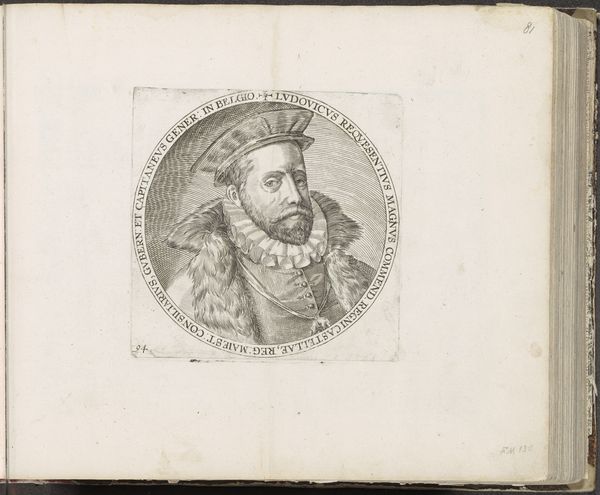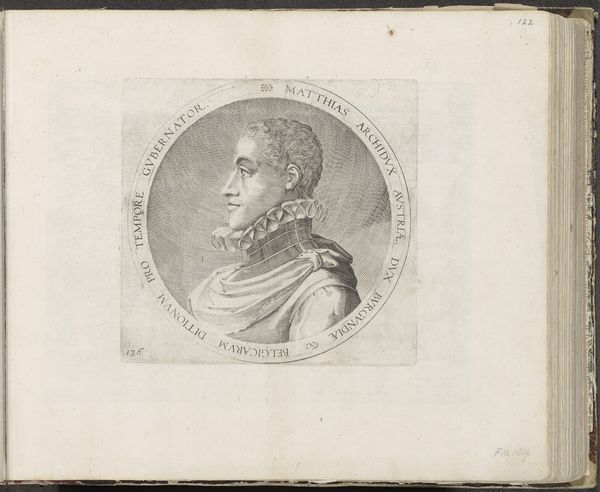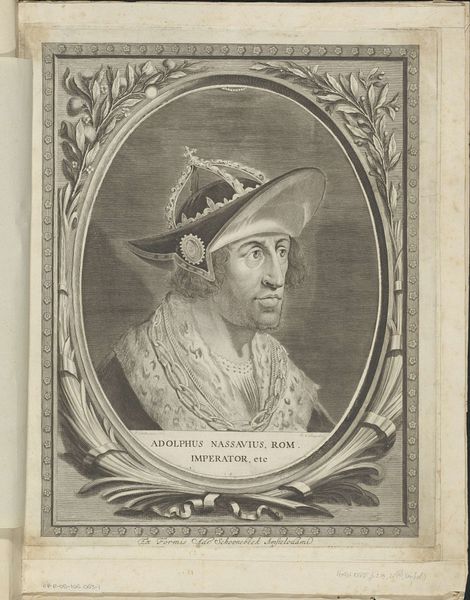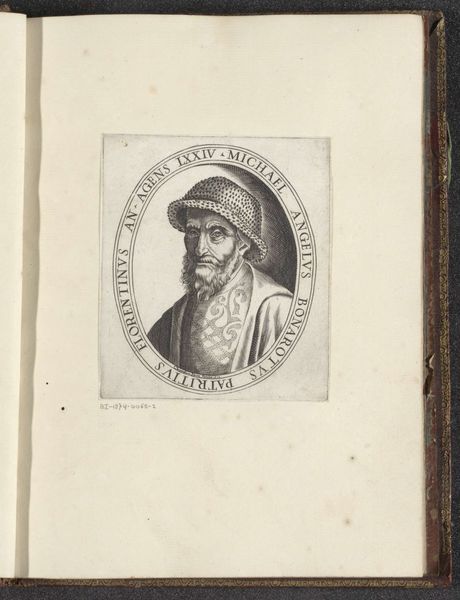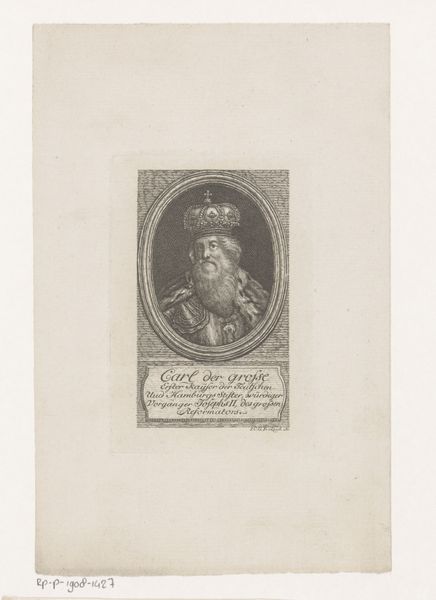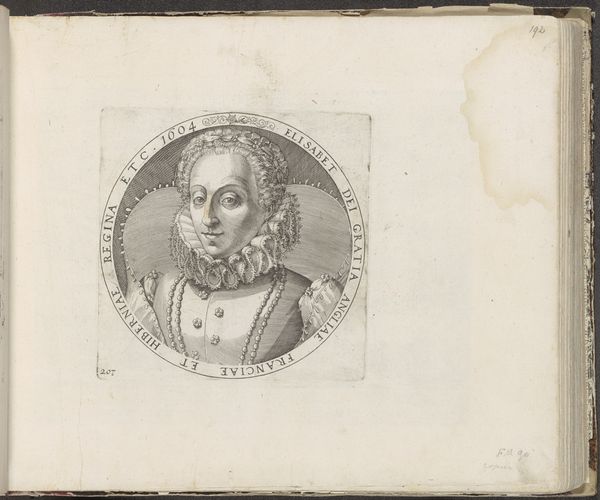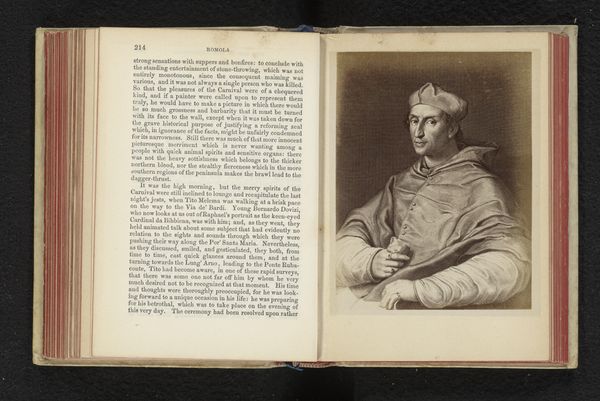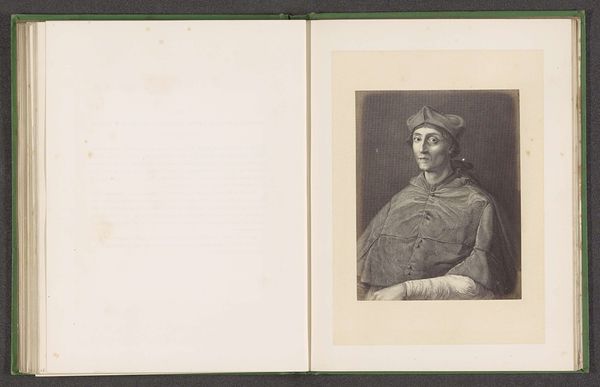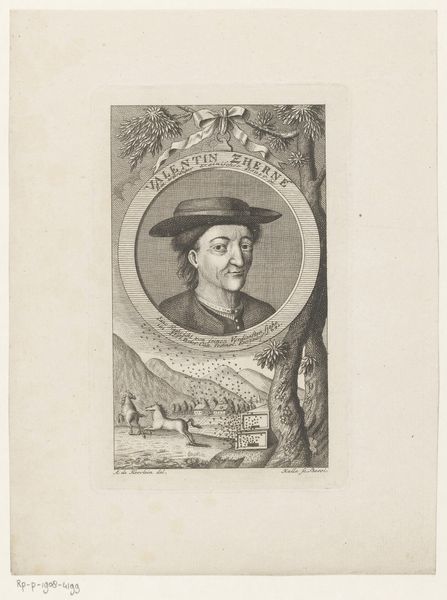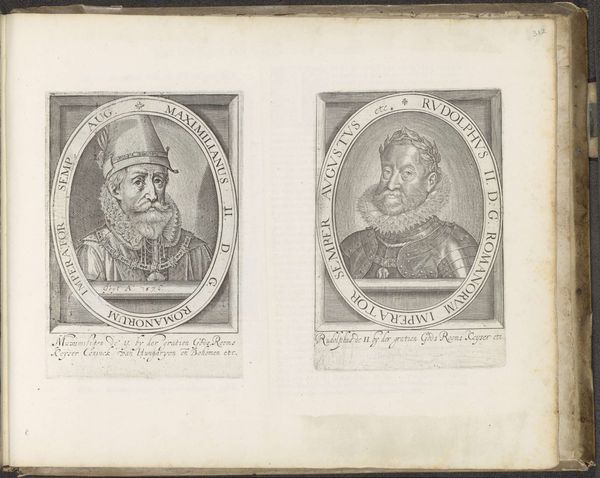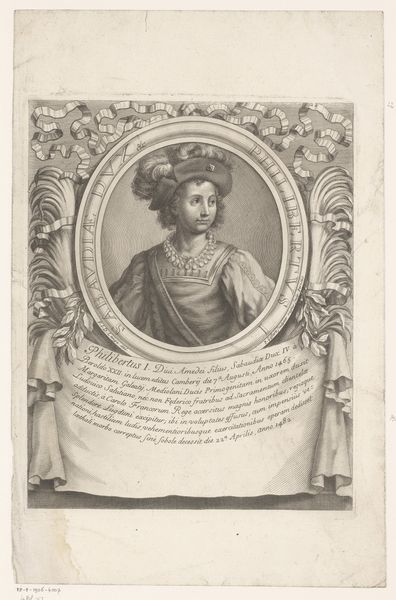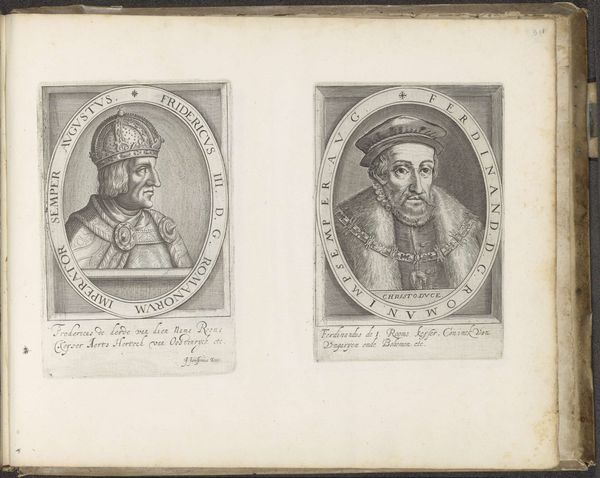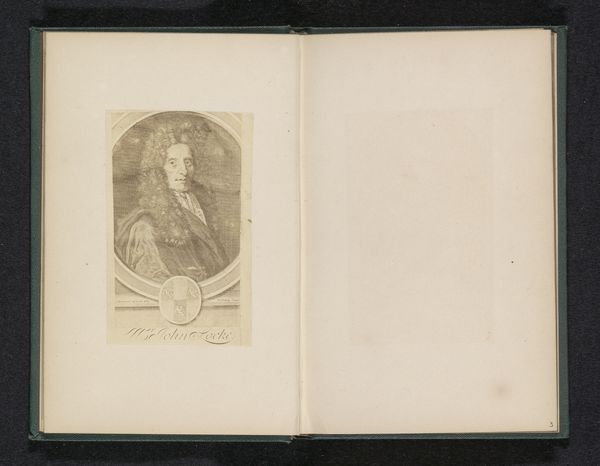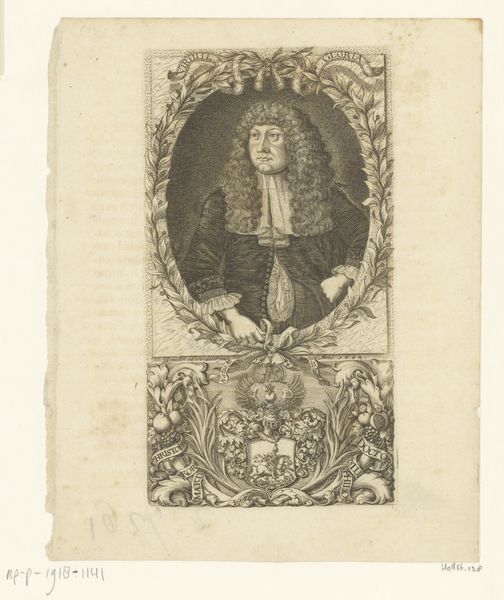
print, engraving
#
portrait
# print
#
old engraving style
#
figuration
#
classicism
#
ancient-mediterranean
#
history-painting
#
engraving
Dimensions: height 200 mm, width 133 mm
Copyright: Rijks Museum: Open Domain
This print of Julius Caesar was made by an anonymous artist, using the technique of engraving. This method involves cutting lines into a metal plate, inking the surface, and then wiping it clean so that ink remains only in the engraved lines. The plate is then pressed onto paper, transferring the image. Look closely, and you can see the crisp quality of the lines, which define Caesar’s features and the details of his laurel wreath. The engraver would have needed considerable skill to render the details of Caesar's face and clothing, as well as the text surrounding the portrait. Engraving like this was part of a much wider culture of printmaking, used for distributing images and texts widely in the early modern period. While we don’t know the artist's name, the amount of work involved in the production process demonstrates that the materials, making, and context are key to understanding the artwork, challenging traditional distinctions between fine art and craft.
Comments
No comments
Be the first to comment and join the conversation on the ultimate creative platform.
